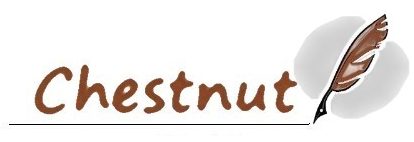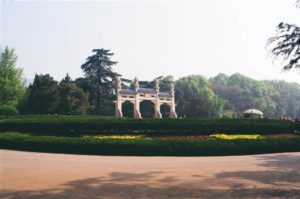Briefly, Nanjing – Dr. Sun Yatsen’s Resting Place
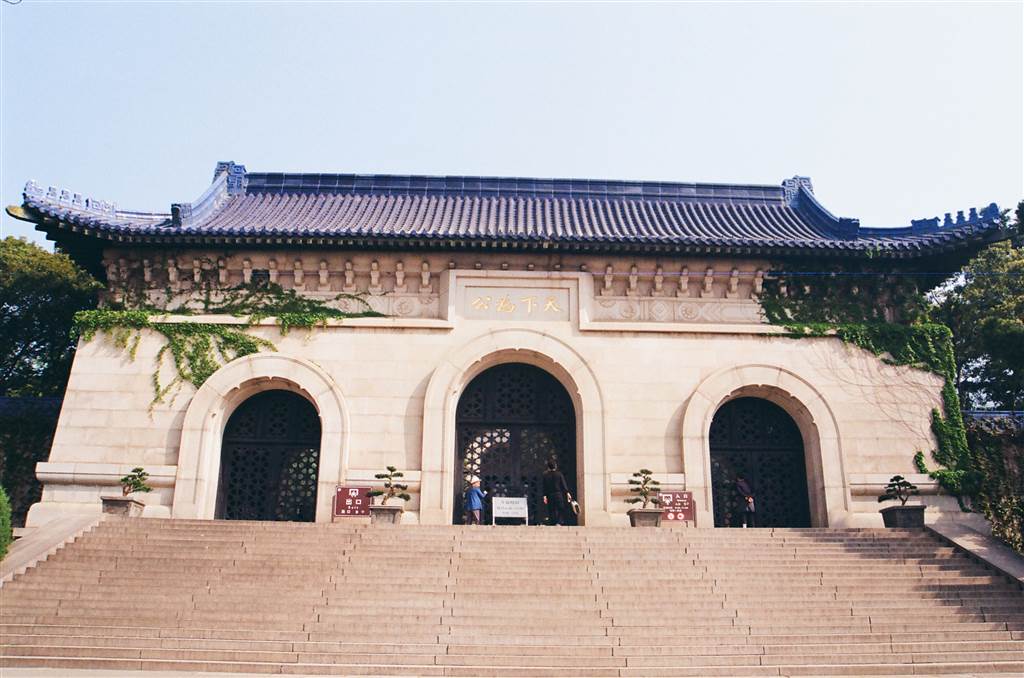
Despite having done some research, I made some critical mistakes on this trip. Although I did learn that the museums of China (all over the nation) close on Mondays, I did not know that it includes the Dr. Sun Yatsen Mausoleum. Furthermore, the staff told me that even if I had gone on other days, I must first register online before securing entrance to the Mausoleum. Needless to say, I had not done prior registration.
I just paid ¥100 as the entrance fee within the Zhongshan Mountain National Park (also known as Purple Gold Mountain, Zijin Shan), where Dr. Sun Yatsen’s Mausoleum is located. I asked the staff, what then did I pay for? He said the ¥100 covered four paid areas within the Zhongshan Mountain, including the Soong Meiling Villa, the Ming Filial (Xiaoling) Tomb, the Music Stage and the Linggu Temple.
There was furthermore ¥50 extra for unlimited tourist cart rides to key destinations within the Zhongshan Mountain area. Having spent a full nine hours in the national park that day, I would say both the entrance fee and the unlimited rides were essential for this trip.
It was 8:30 in the morning. I figured that I should still enjoy the day in Zhongshan Mountain to the best I could. So I hurried on and took my first ride to Dr. Sun Yatsen’s Mausoleum. Yes, it was closed, but I must pay my respect however I could.
On March 12, 1925, Dr. Sun Yatsen lost his fight against liver cancer and bid farewell to the world. He died in Beijing. Yet even as early as 1912, he has expressed his wish to lay in final rest in Nanjing, then the capital of the Republic of China. The Zhongshan Mountain was selected because he expressed this wish when he was on a hunting trip here. “Let Nanjing be remembered as the home of the Provisional Government,” he said to his followers.
Tourists would first walk through the center gate, which features the words “universal love” inscribed on its top beam. From the center gate, there was a long path, gradually inclined, leading up to the steps of the Mausoleum. I have heard that the hike up the Mausoleum was rigorous. It was the trail of history.
The morning was bright. Because the Mausoleum was closed on Monday, there was not yet a crowd. As a result, I was able to take some photos at the steps of the Mausoleum Gate (Ling Men) without fighting for a spare spot. After advancing on the steps, I reached the closed gate that kept all tourists away.
Looking up to the four words on top of the center arch, meaning “the world belongs to the public,” I bowed. The writing was recognizable as Dr. Sun Yatsen’s own. The phrase was his signature. I have finally come to pay respect to the great leader that made modern China. Next time I would do better planning.
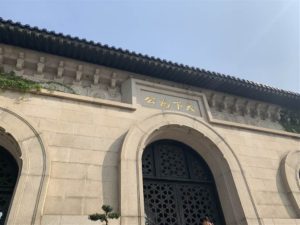
On the days the Mausoleum opens, the tourists would then proceed to the Tablet Pavilion, then the Ceremonial Hall, the marble statue of Sun Yatsen, and finally the Tomb Chamber, which remains closed to visitors.
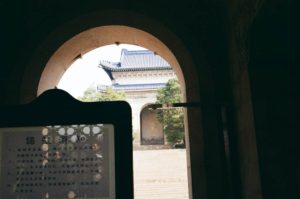
The funeral committee of Dr. Sun Yatsen has settled on the site of the Mausoleum with the selection of the location made by Dr. Sun Yatsen’s wife, Soong Qing-ling. They then sought architectural designs by calling for a competition. A young architect Lu Yanzhi won the competition. He has designed the layout of the Mausleum grounds in bell shape. It symbolizes Sun Yatsen’s name (Zhongshan) with the word “zhong” also meaning bell in Chinese. Furthermore, the Three-People Principle that Dr. Sun Yatsen advocated was the sound of an alarm bell in times of change and turmoil in Chinese history. The funeral committee then procured the construction materials from abroad. They imported stones, granite, concrete, marble etc. – all of the highest quality.
Dr. Sun Yatsen’s Mausoleum took six years and 2.2 million yuan to finish. As the Mausoleum completed, although some structures (including Dr. Sun Yatsen’s marble statue) and construction remained to be done, the nation laid Dr. Sun Yatsen to rest. On 1st June, 1929, the nation held the grand funeral for Dr. Sun Yatsen. It was an official state ceremony with attendance by heads of the foreign powers. Thousands of Nanjing residents lined this same pathway that I walked to bid farewell.
In the turbulent years after its completion, the Mausoleum has suffered damages from the Sino-Japanese War and the Cultural Revolution. Yet the respect of the Chinese people have for Dr. Sun Yatsen has never died. He is a figure that is held to heart both by the Nationalist Government and the Communist Party of China.
When I exited the center gate, I noticed a small observation area tucked away on the side of the main road. There I paid a small sum of money to see the inside of the Tomb Chamber. I noted then the emblem of the Nationalist Party of China inside the structures that I did not get to visit that day. It would be the only place in all of mainland China that any mention of the Nationalist Party could legitimately stand and show.
Works Cited:
- Eric N Danielson, Nanjing and the Lower Yangzi, The Definitive Travel Guide at 131-134.
- A former exhibition on the grand funeral of Sun Yatsen in The Dr. Sun Yatsen Museum of Hong Kong.
- The Chinese Wikipedia entry on Sun Yatsen’s Mausoleum (Zhongshan Ling).
